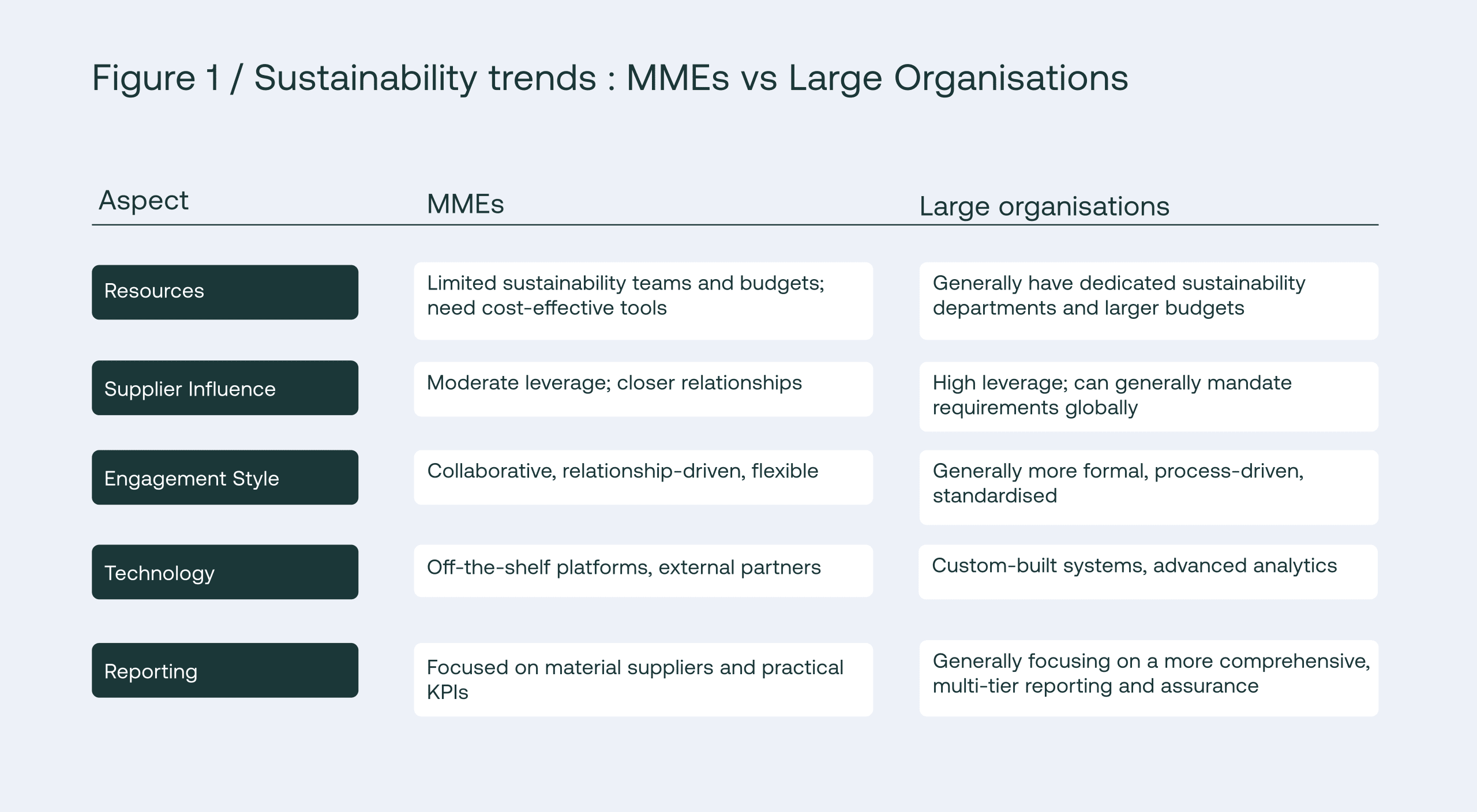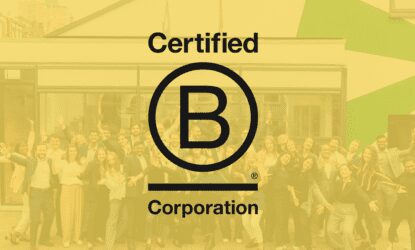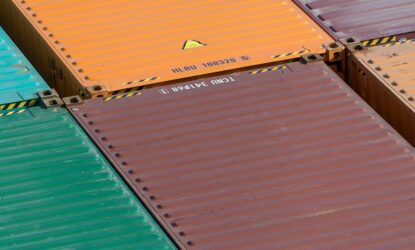 Stay ahead: Revised ESRS datapoints decoded
Stay ahead: Revised ESRS datapoints decoded
“Through collaborative supplier engagement, businesses can unlock new efficiencies, reduce emissions, and build resilient supply chains.”
Mid-market enterprises (MMEs) and large organisations are powerful engines of economic growth and stability. MMEs, positioned between small businesses and large corporations, often punch above their weight-driving innovation, generating substantial employment, and contributing significantly to GDP. Large organisations, meanwhile, wield significant influence through their vast supply chains. Yet, both face unique challenges in embedding sustainability. For MMEs, supplier engagement is a strategic opportunity to drive innovation and build resilience despite resource constraints. For large organisations, it’s about leveraging scale to enforce change and meet ambitious climate targets.
With supply chain emissions accounting for approximately 92% of a company’s total greenhouse gas emissions in the US, engaging suppliers in sustainability efforts is critical for achieving meaningful progress on climate goals (1. U.S. EPA, 2023). This article provides a practical, five-step playbook tailored to both MMEs & large organisations, helping them prioritise, communicate, incentivise, collaborate, and monitor supplier engagement initiatives effectively.
As a global sustainability consultancy supporting over 400 clients across 1,000 projects, Nexio Projects understands the complexity of managing ESG performance across supply chains. From supplier engagement to sustainable procurement strategies, we help businesses reduce risk, enhance transparency, and meet growing regulatory and stakeholder demands. Whether you’re improving your EcoVadis score or aiming for industry leadership, our experts bring practical guidance and a track record of success.
Why supplier engagement matters for MMEs & large organisations
MMEs (100–500 employees in the EU; 500–1,500 in the US) are large enough to influence their supply chains but often lack the scale or resources of multinational corporations. They can drive significant change by leveraging purchasing power and strategic relationships, but must do so efficiently. Large organisations, on the other hand, have the resources and scale to implement comprehensive supplier engagement programmes, but often face complexity and slower adaptability due to their size. As regulators and stakeholders demand more transparency, both MMEs and large organisations must step up their efforts-albeit with different approaches.
Different approaches: MMEs vs. large organisations

The 5-Step framework for supplier engagement
1. Prioritise: Identify high-impact suppliers
The first step in any supplier engagement programme is identifying which suppliers contribute most significantly to your environmental footprint. Using greenhouse gas (GHG) data can help you rank suppliers by their emissions intensity or their share of Scope 3 emissions.
How to prioritise:
- Conduct a Scope 3 screening to identify suppliers responsible for the majority of your emissions.
- Use spend-based analysis as a proxy if activity data is unavailable for certain suppliers.
- Focus on suppliers that cumulatively account for at least 67% of your total Scope 3 emissions, as recommended by the Science-Based Targets initiative (SBTi).
2. Communicate: Share Climate goals and resources
Once high-impact suppliers are identified, clear communication is essential. Suppliers need to understand your sustainability objectives and how they align with broader industry standards like CDP (Carbon Disclosure Project) or SBTi-aligned targets.
Best practices:
- Host virtual town halls or webinars to explain your climate goals and expectations.
- Provide resources such as training programmes or case studies that demonstrate successful decarbonisation efforts.
- Ensure ongoing communication through dedicated procurement teams who can address supplier questions and concerns.
3. Incentivise: Reward sustainable practices
Incentives can motivate suppliers to adopt sustainable practices more quickly. Offering preferential terms or public recognition can go a long way in fostering collaboration.
Examples of incentives:
- Preferential payment terms for suppliers who meet sustainability criteria.
- Recognition programmes that highlight top-performing suppliers in sustainability reports or stakeholder communications.
- Joint marketing opportunities for suppliers who achieve significant emissions reductions.
4. Collaborate: Partner on joint projects
True progress requires collaboration between buyers and suppliers. Joint projects can help both parties innovate and share best practices while addressing common challenges.
Collaboration ideas:
- Co-developing low-carbon product lines or packaging solutions.
- Sharing renewable energy infrastructure or waste management systems.
- Partnering on pilot projects that test new technologies before scaling them across the supply chain.
5. Monitor: Conduct regular reviews
Ongoing monitoring ensures accountability and continuous improvement. Annual reviews provide an opportunity to assess progress against targets and refine strategies as needed.
Monitoring tools:
- Supplier scorecards that track performance metrics such as emissions reductions or compliance with reporting requirements.
- Automated systems that aggregate data across multiple categories for easier analysis.
- Regular feedback sessions with suppliers to identify barriers and opportunities for improvement.
Frequently asked questions
What is supplier engagement in the context of sustainability?
Supplier engagement refers to the process of collaborating with your supply-chain partners to improve sustainability practices, enhance transparency, and reduce environmental and social risks across procurement and logistics operations.
What steps should large organisations take to engage suppliers effectively on sustainability?
Start by mapping your supply-chain, identifying key suppliers, setting clear sustainability expectations and KPIs, training partners, and tracking progress through audits and regular communication.
How can companies measure the effectiveness of supplier engagement programmes?
Companies can track metrics such as supplier sustainability scores, percentage of spend under sustainable contract terms, reduction in supplier-related emissions or incidents, and supplier self-assessment participation rates.
What challenges do mid-market and large organisations face in supplier sustainability engagement?
Common challenges include fragmented supplier visibility, varying maturity levels among suppliers, lack of standardised data, and limited resources to support smaller partners in meeting requirements.
What tools or frameworks help drive supplier engagement in sustainability?
Useful frameworks include supplier codes of conduct, sustainability scorecards, risk-based assessments, industry-specific standards (e.g., EcoVadis), and digital platforms that facilitate collaboration and data tracking.
Solutions tailored for MMEs & large organisations
Green Project’s Carbon Accounting & Decarbonisation Platform is designed so any company, no matter their size, can accurately measure and confidently manage down their emissions. Tangible Scope 3 decarbonisation is accelerated with their integrated tools for audit-ready Scope 1, 2, and 3 footprinting, supply chain engagement, and renewable energy procurement. Meanwhile, Nexio Projects offers specialised training programmes and engagement initiatives tailored for procurement, supply chain & sustainability teams. By equipping these teams with the necessary skills and knowledge, Nexio Projects empowers them to drive meaningful change across the supply chain. Together, these solutions empower organisations to implement scalable supplier engagement programmes that deliver measurable results.
Supplier engagement is no longer optional—it’s a strategic imperative for mid-market & large organisations looking to stay competitive in an increasingly sustainability-driven economy. By following this five-step playbook—prioritising high-impact suppliers, communicating goals clearly, incentivising sustainable practices, collaborating on joint projects, and monitoring progress—MMEs & large organisations can turn their supply chains into powerful drivers of environmental impact. If you’re interested in content about supplier engagement and data collection for sustainability, check out our webinar on EcoVadis data collection throughout the supply chain here.
With tailored solutions like those offered by Green Project and Nexio Projects, teams can navigate this complex journey with confidence—building resilient supply chains that benefit both their bottom line and the planet.
Contact Nexio Projects for further questions and support on your supplier engagement, and more!
Reference :
- U.S. Environmental Protection Agency (2023) Scope 3 Inventory Guidance. Available at: https://www.epa.gov/climateleadership/scope-3-inventory-guidance (Accessed: 25 March 2025)












